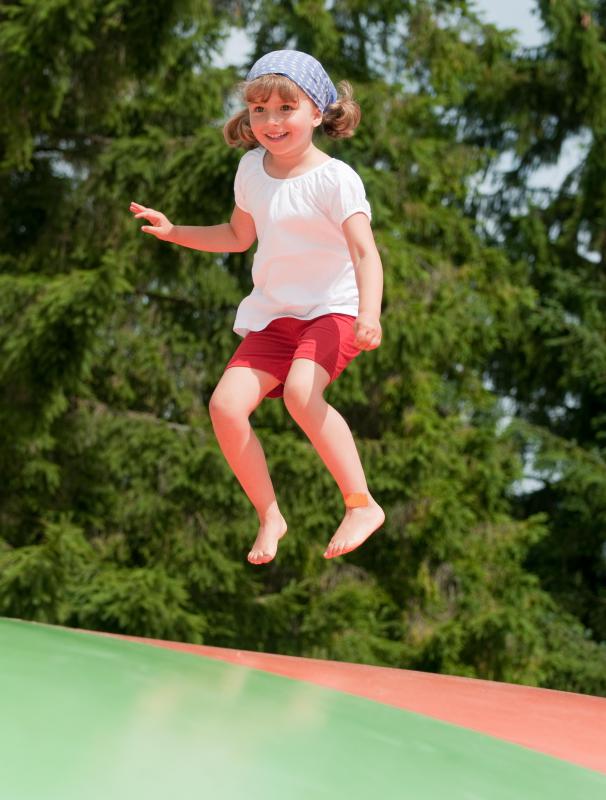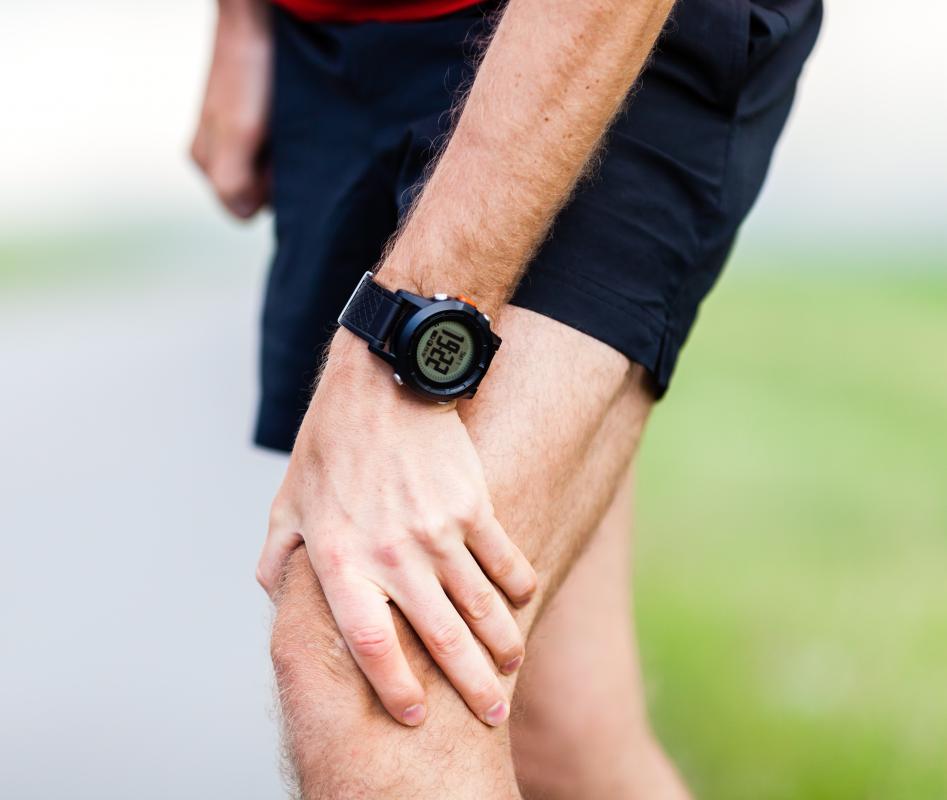At WiseGEEK, we're committed to delivering accurate, trustworthy information. Our expert-authored content is rigorously fact-checked and sourced from credible authorities. Discover how we uphold the highest standards in providing you with reliable knowledge.
What are the Different Types of Exercise Trampolines?
Using a trampoline is often considered an effective way to lose weight and improve endurance through exercise. To that end, there are a few types available, with one of the most popular kinds for the home being the rebounder. This kind of fitness equipment is usually considered safe and effective for anyone looking to get into shape. Those who wish to get a little more serious with their athletic skills may choose a competition trampoline to use in various sports. Of course, some people prefer to use exercise trampolines outside, in which case they can choose one that is either water resistant, or even made specifically for use with water.
Rebounders have become popular among those looking to get into shape regardless of their current fitness level, as they are typically easy for nearly anyone to use. This is likely because they are often low to the ground and quite small, which enables them to fit in just about any home or apartment. Most of these exercise trampolines also come with a handrail to increase safety, as this allows users to keep their balance while jumping. The majority of exercise routines involving a mini trampoline use the rebounder due to its popularity among people of all ages.

Some users of trampolines compete in a sport that requires this type of fitness equipment. For this reason, competition trampolines exist, which are often slightly angled and a bit bouncier than most exercise trampolines. Gymnasts and cheerleaders are examples of athletes who use this type of equipment, as they may need to achieve some height for their vault or floor routines. This type of exercise trampoline is usually a little more durable than the rebounder, especially since most users have to take a running leap onto it rather than just jumping up and down.

There are people who want to use exercise trampolines, but do not have the space in their home to keep this kind of workout equipment around. Thus, they may be interested in trampolines that are meant for the outdoors, as these can be placed in the backyard or apartment patio. They are usually different from most exercise trampolines because the frame is more durable, and the material stretched over the frame is not typically damaged by moisture. In fact, some trampolines are even made to be used in the water, as they can float with the help of inflatable tubes, allowing users to get fit with this product while in the pool.
AS FEATURED ON:
AS FEATURED ON:














Discuss this Article
Post your comments